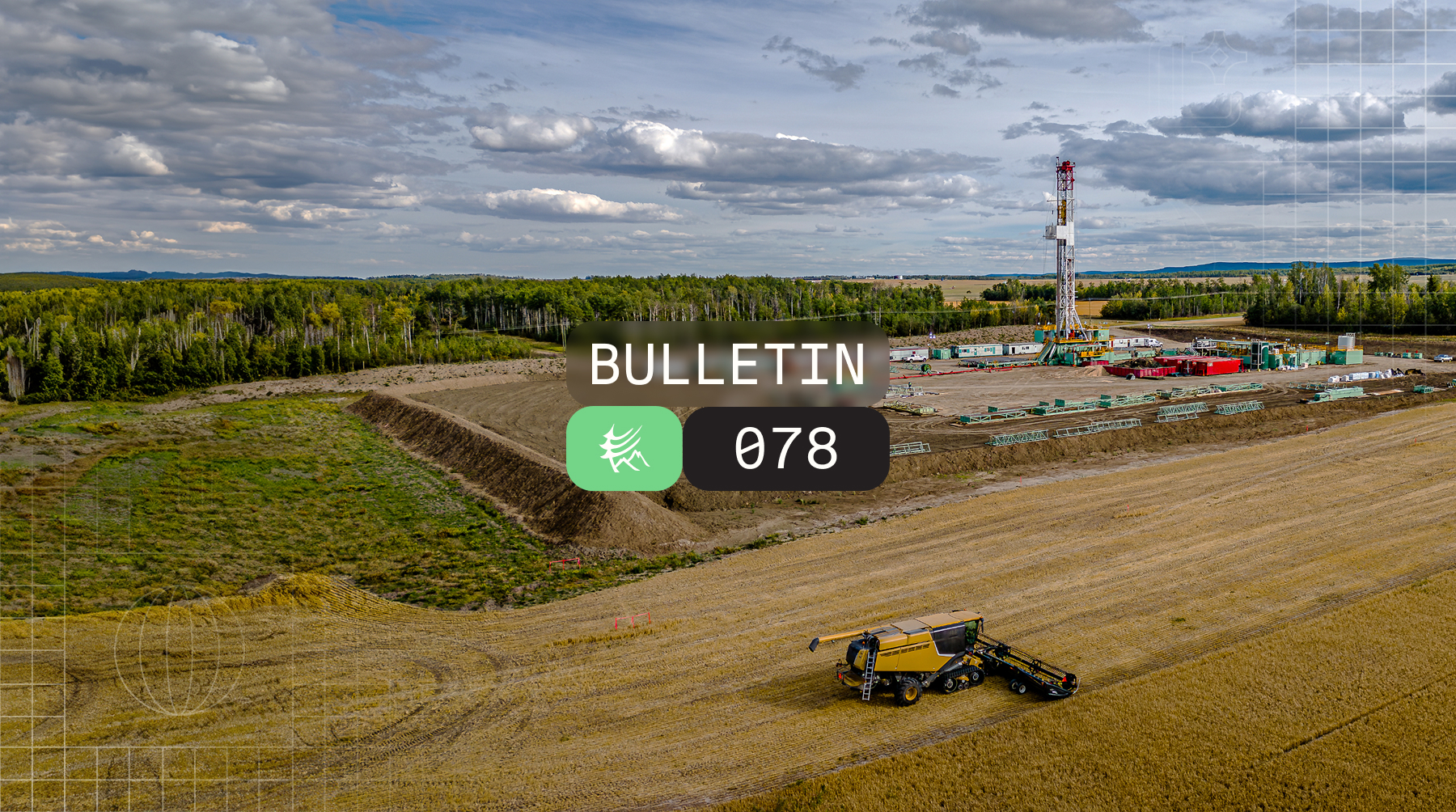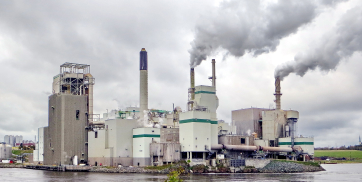In this month’s Research Digest, we catch you up on the latest peer-reviewed research in oil and natural gas (O&G) emissions science, including a Baltic Sea ultra-emitting event, methane-slip contributions, aerial measurement analysis, certified gas programs, UK under-reporting, and more!
220,000 Tonnes of Methane Released into Atmosphere from Nord Stream Baltic Pipelines
On September 26, 2022, large leaks were detected in two Baltic Sea Nord Stream pipelines near Sweden and Denmark. Researchers apply multi-source inversion techniques to in situ and satellite observations, estimating 220,000 tonnes of methane (~6.2 million tonnes of CO2 equivalent) released before noon on October 1, 2022. The authors conclude that more accurate estimates of the total leakage and temporal variations in the methane emission rate are required to better understand the environmental impact of the incident here.
UK Upstream Methane Emissions are Likely 5-Fold Greater than Reported
UK’s upstream oil and gas methane emissions are reassessed using an integrated approach combining direct measurements and published data. The authors estimate 289,000 tonnes methane were emitted in 2019. This compares to the National Atmospheric Emissions Inventory estimate of 52,000 tonnes in the same period. The authors suggest emission factors in this methodology may not accurately represent actual environmental conditions and management practices.
The largest sources of methane identified here are venting, flaring, and fugitive emissions, with improved estimates of 112,000, 76,000, and 74,000 tonnes methane during the 2019 study period, respectively. This study recommends UK improve technology in offshore leakage, monitoring, and reporting in order to achieve its Global Methane Pledge commitments here.
Half of Methane Emissions Due to Fuel Slip in Natural Gas Powered Compressors in BC Aerial Campaign
An aerial methane remote sensing campaign, using the Bridger Photonics Gas Mapping LiDAR (light detection and ranging) technology, was conducted at 508 upstream oil and gas sites in British Columbia, Canada. Ground based optical gas imaging (OGI) follow-up attributed 80% of emissions to compressor engine slip, storage tanks, and unlit flares. Over half of quantified methane resulted from natural gas powered compressors. The authors note that the regulatory-prescribed OGI-based LDAR is often incapable of detecting the methane contained in combustion exhaust. Future regulations should incentivize electrification of compressor drivers, set performance standards or limits on allowable methane emissions, and implement independent monitoring, reporting, & verification (MRV) to screen and identify high-emitting sources and associated mitigation opportunities here.
Analysis of Nearly 1 Million Aerial Measurements
Aerial measurements for 959,573 well site measurements are combined with a state of the art emissions simulation tool to estimate methane emissions from broad oil and gas production assets. Methane emissions distributions are developed for six US regions: the Permian, Forth Worth, San Joaquin, Denver-Julesburg, Uinta, and Appalachian basins with production-weighted loss rates ranging from 0.75% (in a high productivity area of Appalachia) to 9.63% (in the Permian basin).
This study confirms that the EPA GHGI method of scaling up component level measurements will underestimate basin-scale emissions. The importance of comprehensive campaigns is emphasized, with aerially measured emissions contributing a major portion of emissions in most basins, although these emissions are only present at a small fraction of sites. The authors state that accurately estimating oil and gas methane emissions requires “measuring almost everything” here.
Aerial Gas Mapping LiDAR Controlled Release Testing
Bridger Photonics’ Gas Mapping LiDAR (GML) system is tested in 650 controlled release test flights at the Methane Emissions Technology Evaluation Center (METEC) in Fort Collins, Colorado and by Stanford in Ehrenberg, Arizona. Results indicate a 90% probability of detection for 0.25 (kg/h)/(m/s) at 500 ft and 0.41 (kg/h)/(m/s) at 675 ft. This is approximately equivalent to 1 kg/h and 2 kg/h at 3.9 m/s wind speed. Associated laboratory testing did not identify significant interference in the methane detection capabilities from ethylene, ethane, propane, n-butane, i-butane, or carbon dioxide.
Remote sensing techniques are recommended to rapidly scan many facilities and inform bottom-up inventory models. The authors suggest an effective emissions management strategy by targeting the largest sources which disproportionately contribute to total emissions here.
Single Blind Testing of Continuous Monitoring (CM) Solutions at METEC
11 different continuous monitoring solutions are tested over a series of 200 controlled release experiments at the Methane Emissions Technology Evaluation Center (METEC). Quantification performance varied widely across continuous monitors, with average error ranging from -40% to 93% for emission rates > 1 kg/hr (95% confidence interval).
This study is the first publication of continuous monitoring testing using a broadly repeatable consensus protocol. Although it shows that CM solutions’ accuracy and repeatability have improved, the challenges of balancing high sensitivity with low false positive rate are highlighted. The authors conclude with a message of caution: CM solutions should be utilized with knowledge of their performance limitations — While they can detect large emitters reliably, reliance for quantification is likely premature. Read more here.
Review of Current and Emerging Methane Emissions Monitoring Technology
A recent review article discusses how various bottom-up and top-down methane monitoring technologies can complement each other to fill measurement gaps in inventories. Measurement approaches highlighted include:
ground based- core samples, flux chambers, proximal spectroscopic imaging, external tracer, inverse dispersion, and micrometeorological measurements.
airborne- mass balance, remote spectral LiDAR, and remote spectral imaging.
Satellite– remote spectral imaging.
Although current spatial resolution in satellite monitoring is quite coarse, upcoming technology (hyperspectral and ultraspectral sampling) will improve point source measurements from space.
Strengths and weaknesses for various methods are outlined here.
Critical Review of Certified Gas
Equitable Origin’s EO100, Project Canary’s TrustWell, and MiQ, the three most established certified gas programs, are examined and compared in their methodologies, program governance, social/environmental measures, and scoring systems. Highlighted differences of the three primary certifications are:
EO100: Following the Oil and Gas Methane Partnership 2.0 protocols, this certification is acquired by self assessment followed by an independent on site investigation. Although EO100 has no component directly measuring methane, emissions are reduced through an inventory-based approach complying with best practices and technologies.
TrustWell: Following the EPA’s Greenhouse Gas Reporting Program protocols, this certification carries out a one- to two-day site visit to inspect a minimum of 10% of the wells for operators meeting its criteria. Requiring operators to meet specific emissions intensity targets, TrustWell additionally requires continuous methane monitoring for higher certification tiers.
MiQ Following the Natural Gas Sustainability Initiative’s Methane Intensity Protocol, this certification requires two separate assessments by independent auditors. Qualified operators are required to provide evidence of emissions measurements.
The authors conclude by commenting on the challenge of high costs, limited reach of regulatory bodies, and lack of data availability, but states that certification programs are an important step toward sustainable oil and gas here.






